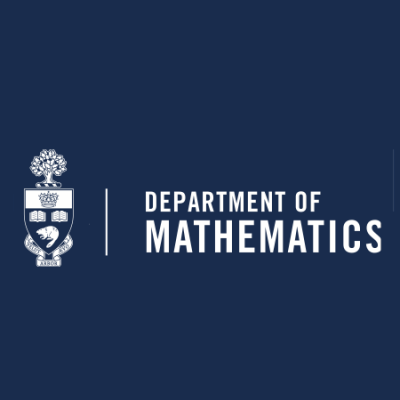Maxime Fortier Bourque
Coxeter Assistant Professor University of Toronto, Department of Mathematics

University of Toronto, Department of Mathematics
View more experts managed by University of Toronto, Department of Mathematics
Industry Applications
Research Interests
Accomplishments
Postdoctoral Fellowship
Awarded by the Fonds de recherche du Québec - Nature et technologies.
Postgraduate Scholarship
Awarded by the Natural Sciences and Engineering Research Council of Canada.
Masters Research Scholarship
Awarded by the Fonds de recherche du Québec - Nature et technologies.
Alexander Graham Bell Canada Graduate Scholarship
Awarded by the Natural Sciences and Engineering Research Council of Canada.
Math in Moscow Scholarship
Awarded by the Natural Sciences and Engineering Research Council of Canada and the Canadian Mathematics Society.
Undergraduate Student Research Award
Awarded by the Natural Sciences and Engineering Research Council of Canada.
Governor General’s Academic Medal
Awarded to the student graduating with the highest average from a high school, as well as from approved college or university programs.
Education
City University of New York (CUNY)
Ph.D.
Mathematics
2015
Advisor: Jeremy Kahn
Brown University
M.Sc
Mathematics
2013
Université Laval
M.Sc
Mathematics
2010
Université Laval
B.Sc
Mathematics
2009
Links
Languages
- English
- French
Articles
Non-convex balls in the Teichmüller metric
arXiv2016
We prove that the Teichmuller space of surfaces of genus g with p punctures contains balls which are not convex in the Teichmuller metric whenever 3g−3+p>1.
The holomorphic couch theorem
arXiv2015
We prove that if two conformal embeddings between Riemann surfaces with finite topology are homotopic, then they are isotopic through conformal embeddings. Furthermore, we show that the space of all conformal embeddings in a given homotopy class deformation retracts into a point, a circle, a torus, or the unit tangent bundle of the codomain, depending on the induced homomorphism on fundamental groups. Quadratic differentials play a central role in the proof.
The converse of the Schwarz Lemma is false
Annales Academiæ Scientiarum Fennicæ Mathematica2016
Let h : X → Y be a homeomorphism between hyperbolic surfaces with finite topology. If h is homotopic to a holomorphic map, then every closed geodesic in X is at least as long as the corresponding geodesic in Y, by the Schwarz Lemma. The converse holds trivially when X and Y are disks or annuli, and it holds when X and Y are closed surfaces by a theorem of Thurston. We prove that the converse is false in all other cases, strengthening a result of Masumoto.
Conformal grafting and convergence of Fenchel-Nielsen twist coordinates
Conformal Geometry and Dynamics2015
We cut a hyperbolic surface of finite area along some analytic simple closed curves, and glue in cylinders of varying moduli. We prove that as the moduli of the glued cylinders go to infinity, the Fenchel-Nielsen twist coordinates for the resulting surface around those cylinders converge.
Rational Ahlfors Functions
Constructive Approximation2015
We study a problem of Jeong and Taniguchi to find all rational maps which are Ahlfors functions. We prove that the rational Ahlfors functions of degree two are characterized by having positive residues at their poles. We then show that this characterization does not generalize to higher degrees, with the help of a numerical method for the computation of analytic capacity. We also provide examples of rational Ahlfors functions in all degrees.
Super-identical pseudospectra
Journal of The London Mathematical Society2009
The complex N × N matrices A and B are said to have super-identical pseudospectra if, for each z ∈ ℂ, the singular values of A − zI are the same as those of B − zI. We explore this condition and its consequences. On the positive side, drawing on ideas from invariant theory, we prove that there exists an integer m = m(N) such that ‘almost every’ m-tuple of N × N matrices with super-identical pseudospectra contains a pair that are unitarily equivalent. On the negative side, we present an example of a pair of non-derogatory 4 × 4 matrices A and B with super-identical pseudospectra such that ||A^2|| ≠ ||B^2||.

